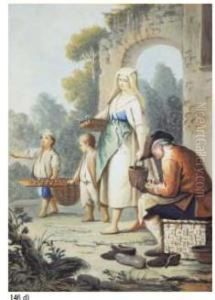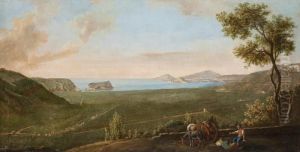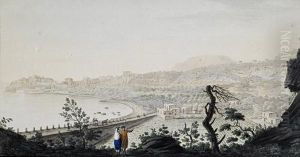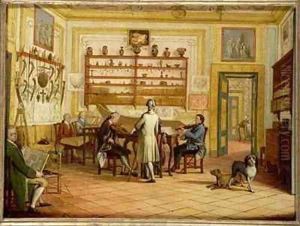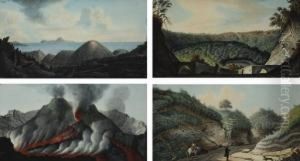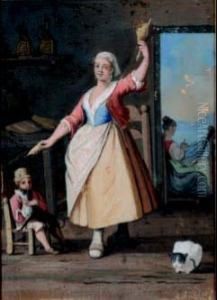





A) Banco Di Acquarolo Napoletano) B) Donna Del Borgo Di Chiaia C) Donna Dell'isola Di Ischia D) Venditore D'aglio Al Minuto
-
About Reproduction
Discover the allure of art with our faithful reproduction of "A) Banco Di Acquarolo Napoletano) B) Donna Del Borgo Di Chiaia C) Donna Dell'isola Di Ischia D) Venditore D'aglio Al Minuto", originally brought to life by the talented Pietro Fabris. Unlike posters or prints, our hand-painted oil painting breathes an unique sense of depth and texture into your space. Every detail, every stroke, and every texture is meticulously recreated, paying the perfect homage to Pietro Fabris and his artistic vision.
Owning this piece is more than just decoration - it's a statement of your refined taste in art. Let the vibrant colors and intricate details of this replica serve as a daily reminder of the beauty in our world. Elevate your decor and appreciate the richness of art with our replica of this masterpiece.
-
Painting Description
A) Banco Di Acquarolo Napoletano
"Banco Di Acquarolo Napoletano" is a notable work by the 18th-century Italian artist Pietro Fabris, who was renowned for his depictions of daily life in Naples. This painting, whose title translates to "The Neapolitan Water Seller's Stall," captures a vibrant street scene where a water seller, or 'acquaiolo', is depicted at his stall. The work is a fine example of genre painting, a style that Fabris excelled in, offering a glimpse into the customs and social dynamics of Naples during the period. The artist's attention to detail not only provides an insight into the occupational attire and tools of the trade but also reflects the broader cultural and economic milieu of the city. The painting is significant for its historical value, as it documents the urban landscape and the lives of ordinary people in 18th-century Naples.
B) Donna Del Borgo Di Chiaia
"Donna Del Borgo Di Chiaia" is another celebrated work by Pietro Fabris, showcasing his skill in portraying the people and atmosphere of Naples in the 18th century. The title translates to "Woman of the Chiaia District," and the painting features a female figure from the Chiaia neighborhood, a fashionable area of Naples during that era. Fabris's portrayal is notable for its vivid character study and the depiction of contemporary Neapolitan fashion and social status. The artwork serves as a cultural artifact, providing insights into the attire, posture, and demeanor of a woman belonging to a specific social milieu in Naples. Through his work, Fabris contributes to the visual documentation of the diverse societal segments present in the city at the time.
C) Donna Dell'isola Di Ischia
In "Donna Dell'isola Di Ischia," Pietro Fabris presents a compelling portrait of a woman from the island of Ischia, located in the Gulf of Naples. The title translates to "Woman of the Island of Ischia," and the painting is part of Fabris's broader body of work that captures the essence of Neapolitan life and culture. This particular piece highlights the traditional clothing and accessories associated with the inhabitants of Ischia, reflecting the unique identity and customs of the island community. Fabris's attention to the nuances of local dress and his ability to convey the individuality of his subjects make this painting an important record of the regional diversity within the Kingdom of Naples during the 18th century.
D) Venditore D'aglio Al Minuto
The painting "Venditore D'aglio Al Minuto" by Pietro Fabris is a representation of a garlic vendor engaged in the act of selling his goods. The title translates to "Retail Garlic Seller," and it is part of Fabris's extensive portfolio that illustrates various street vendors and craftsmen of Naples. This work is particularly significant for its portrayal of the lower economic strata and the informal economy that was prevalent in the city. The artist's depiction of the vendor, along with the detailed rendering of the garlic and the interaction with potential customers, offers a window into the daily commerce and the lively street culture of 18th-century Naples. Fabris's paintings are valued for their ethnographic accuracy and their contribution to the understanding of the social fabric of the time.
-
Lead Time & Shipping
When you order this oil painting replica, it typically takes 2-3 weeks to paint. If the artwork is more complex, it might need a little more time to ensure the best quality. Once it's ready, we'll send you a photo for your approval. After you give the green light, we'll ship it to you for free.
-
Return & Refund
We believe in the quality of our hand-painted oil painting reproductions, and your satisfaction is our priority. If for any reason, you are not completely satisfied with your purchase, we offer a 45-day return policy. You can return your artwork within 45 days of receipt and receive a full refund. Please note that the artwork must be returned in the original packaging and in the same condition as it was received.







